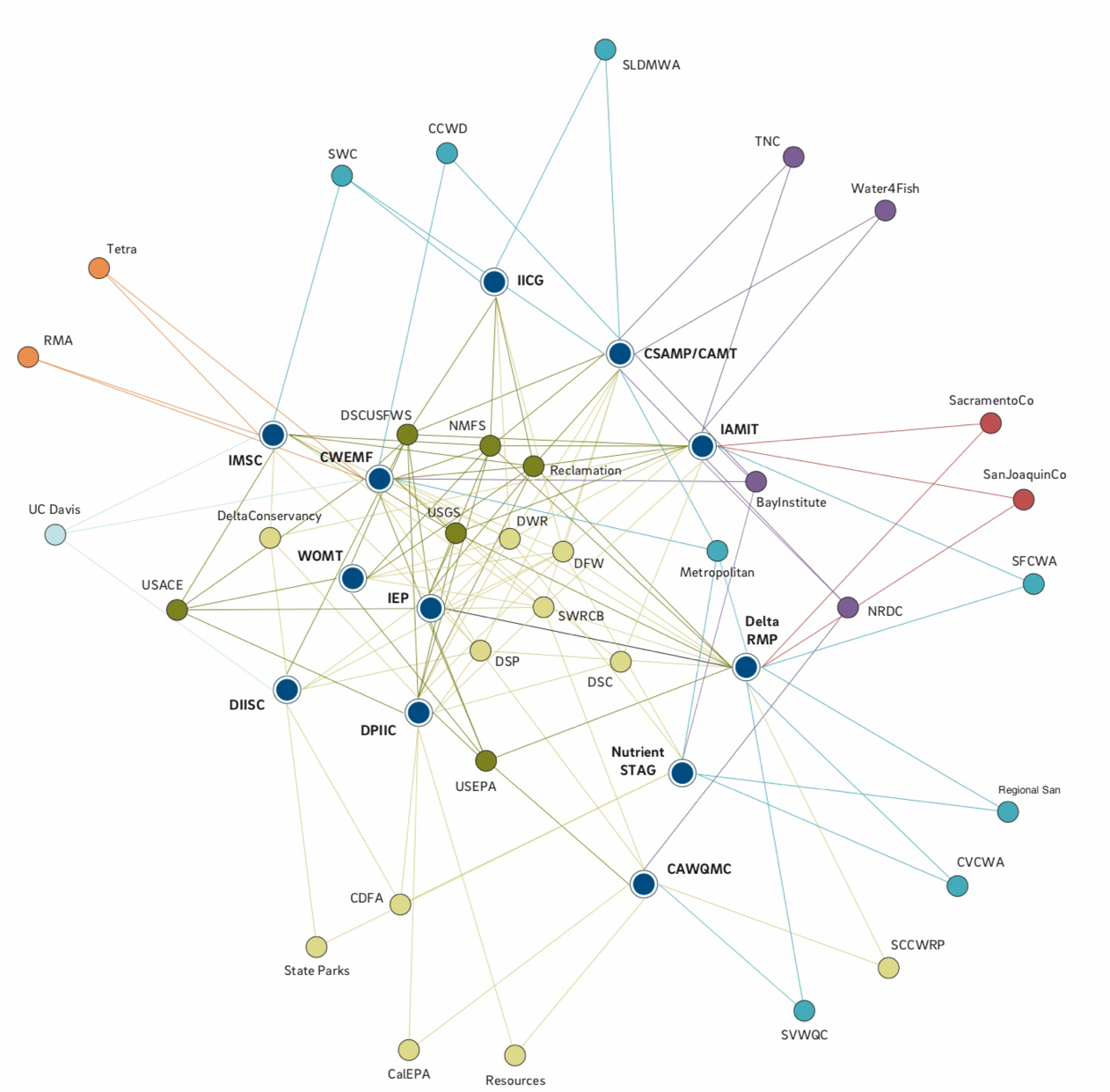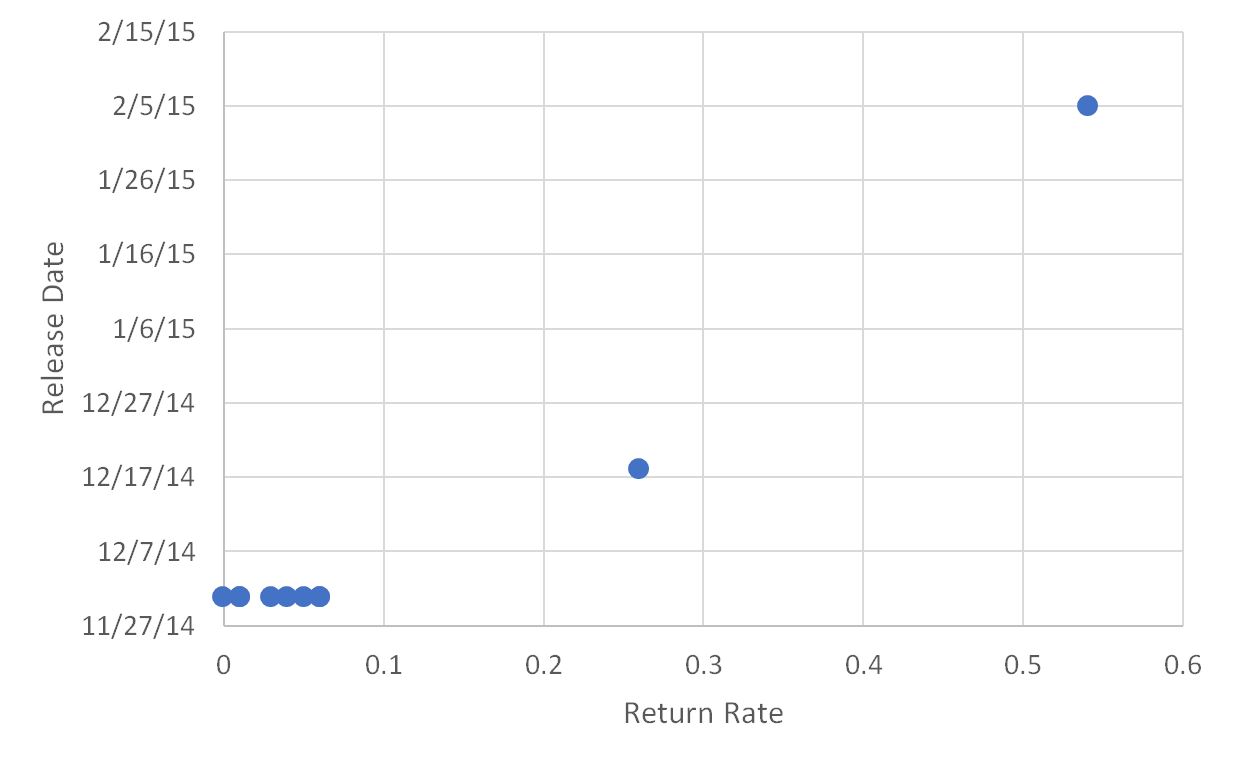In a post last year I remarked on the progressive management of the Mokelumne River hatchery. The hatchery is a mitigation hatchery operated by the California Department of Fish and Wildlife in partnership with the East Bay Municipal Utility District. Its activities over the past several decades have led to the recovery of Mokelumne River salmon.
The hatchery’s 6 million smolt releases continue to survive well under present management practices (Figures 1 and 2). Escapement of adults to the river and hatchery below Camanche Dam have numbered from 10,000 to 20,000 in recent years,1 a remarkable improvement given that they were produced during the 2012-2016 drought period.
The hatchery is still learning under its adaptive management program. The program has a diversity of release strategies that provide valuable information about the program and what works and what does not. Table 1 shows a summary of their smolt releases from 2016.
Table 1. Summary of Mokelumne Hatchery smolt releases in spring 2016. Source: https://www.rmpc.org
| Release Date | Release Location | Smolts Released |
| 4/20/16 | Sherman West Delta | 902,000 |
| 4/27/16 | Sherman West Delta | 470,000 |
| 5/05/16 | Sherman West Delta | 450,000 |
| 5/09/16 | Mokelumne River | 102,000 |
| 5/10/16 | Golden Gate Bridge | 202,000 |
| 5/12/16 | Sherman West Delta | 902,000 |
| 5/20/16 | Sherman West Delta | 920,000 |
| 5/25/16 | Half Moon Bay (coast) | 485,000 |
| 5/26/16 | Mokelumne River | 402,000 |
| 5/28/16 | Sherman West Delta | 915,000 |
| 6/03/16 | Sherman West Delta | 771,000 |
| 2016 Total | 6,521,000 |
Returns from the 2015 spawn year (brood year 2015) from code-wire-tagged smolt groups released in below-normal/dry water year 2016 ranged from near zero to two percent (Figure 3). The half-million smolts released to the river had near zero returns to fisheries and river/hatchery, while the half-million releases to Half Moon Bay on the coast south of San Francisco had a good return of 2.2 percent. Returns from the remaining 5.5 million smolts released at Sherman Island in the west Delta ranged from 0.1 to 1.4 percent.
The wide-ranging survival rates provide clear guidance for future hatchery smolt-release management.
- April releases do not fare as well as May releases, suggesting that the larger size of May smolts provides a survival advantage.
- River releases in a below normal or dry year like 2016 have poor survival, especially with below average freshwater flows in the lower San Joaquin River (Figure 4) and low Delta outflow (Figure 5).
- Releases at Sherman Island in the west Delta in early June had poor survival compared to May releases, coincident with rapidly falling flows (Figures 4 and 5) and rising water temperatures (Figure 6).
2017 and 2018 release strategies were similar, but weighted more heavily toward Bay and ocean releases.
- Over one million smolts were released on the coast and at the Golden Gate in 2017; 730,000 in 2018.
- Most of the 4 million smolts released at Sherman Island in 2017 were released in May.
- Over 4 million smolts were released at Sherman Island in 2018 from mid-April to early June over a broad range of conditions.
- Nearly 500,000 smolts were released in the Mokelumne River in 2017 and 2018. The 2017 smolts were released in June of a wet cool year, while the 2018 releases were in May of a drier, warmer year.2
If and when information on the tag returns from 2017 and 2018 releases becomes available, it may be possible to move toward a still more effective release strategy that increases smolt survival and contributions to fisheries and river escapement.

Figure 1. Escapement estimates to the Mokelumne Hatchery 1964-2018

Figure 2. Escapement estimates to the Mokelumne River 1952-2018.

Figure 3. Percent return of 2016 Mokelumne Hatchery tagged smolt releases. Source: https://www.rmpc.org

Figure 4. Inflow of San Joaquin River to the Delta in May 2016 along with long-term median flow.

Figure 5. Delta outflow in spring 2016.

Figure 6. Water temperature in lower San Joaquin River at Jersey Point in spring 2016.
- The American and Feather River escapement has been 20,000-30,000 and 40,000-60,000, respectively, for similar numbers of smolt releases. ↩
- Note that San Joaquin River flows and Delta outflows are most important to Mokelumne Hatchery smolts, as the closure of the Delta Cross Channel results in the Mokelumne River being a tributary of the lower San Joaquin River. ↩













